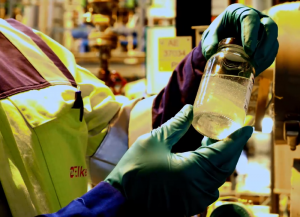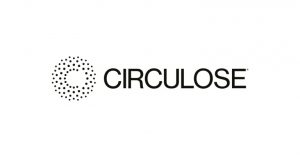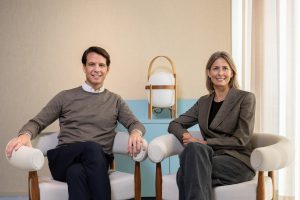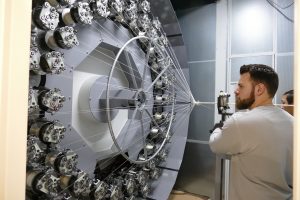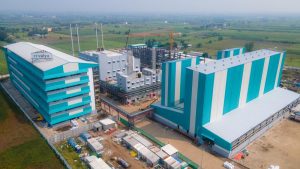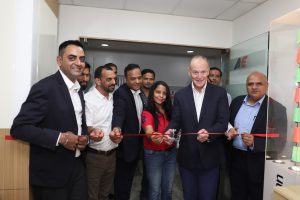 BRUSSELS — November 18, 2024 — In a joint call from both sides of the Atlantic, 78 business associations representing a diverse array of industries from the EU and Mercosur ask their governments to expedite the conclusion of the EU-Mercosur Free Trade Agreement (FTA) negotiations. The statement underscores the strategic importance of reinforcing trade links, fostering investments and promoting sustainable development, which this historic agreement is built to deliver.
BRUSSELS — November 18, 2024 — In a joint call from both sides of the Atlantic, 78 business associations representing a diverse array of industries from the EU and Mercosur ask their governments to expedite the conclusion of the EU-Mercosur Free Trade Agreement (FTA) negotiations. The statement underscores the strategic importance of reinforcing trade links, fostering investments and promoting sustainable development, which this historic agreement is built to deliver.
Addressed to the Presidents of the European Parliament, European Council, European Commission, and Hungarian Presidency of the Council, and shared with the Mercosur Presidency, the statement highlights that over €159 billion in goods and services was traded between the EU and Mercosur in 2022, with mutual investments approaching €380 billion. Together, these economic ties underpin millions of jobs on both continents. The associations highlight the importance of the EU-Mercosur agreement, emphasising that it can help mitigate the challenges posed by geopolitical instability and supply chain disruptions.
The joint statement notes that the agreement represents a rare opportunity to strengthen relations between the EU and Mercosur. Both sides would benefit from an agreement that supports economic recovery and lays the foundations for sustained growth. In particular:
- Market Access and Growth: The removal of trade barriers would enable greater market access, facilitating a steady flow of goods and services.
- Supply Chain Stability: Strengthened trade relationships would mitigate the impact of supply chain disruptions, securing reliable access to essential resources.
- Enhanced Cooperation: By deepening cooperation, the agreement could bolster sustainable development, labour rights, and environmental standards across both regions.
In conclusion, the coalition of business associations calls on policymakers to take immediate steps toward ratification, positioning the EU and Mercosur to advance their mutual competitiveness in a changing and challenging global landscape.
List of Signatories
- ABAL – Associação Brasileira do Alumínio
- ABBD – Associação Brasileira de Bebidas Destiladas
- ABELAC – Alianza de Bebidas Espirituosas de Latinoamérica y el Caribe
- ABIA – Associação Brasileira da Indústria de Alimentos
- ABICAB – Associação Brasileira da Indústria de Chocolates, Amendoim e Balas
- ABICALÇADOS – – Associação Brasileira das Indústrias de Calçados
- ABICS – Associação Brasileira da Industria de Café Solúvel
- ABIFINA – Associação Brasileira das Indústrias de Química Fina
- ABIHPEC – Associação Brasileira da Indústria de Higiene Pessoal, Perfumaria e Cosméticos
- ABINEE – Associação Brasileira da Indústria Elétrica e Eletrônica
- Abipeças – Associação Brasileira da Indústria de Autopeças
- ABIPLAST – Associação Brasileira da Indústria do Plástico
- Abiquim – Associação Brasileira da Indústria Química
- ABIT – Associação Brasileira da Indústria Têxtil e de Confecção
- ABITAM – Associação Brasileira da Indústria de Tubos e Acessórios de Metal
- ABPI – Associação Brasileira da Propriedade Intelectual
- ABRABE – Associação Brasileira de Bebidas
- ABRAFAR – Associação Brasileira de Fabricantes de Refratários
- ABRAFRUTAS
- ABRAMEQ – Associação brasileira das Indústrias de Máquinas e Equipamentos para os setores do couro, calçados e afins
- ACEA – The European Automobile Manufacturers’ Association
- AmCham EU
- ANFACER – Associação Nacional dos Fabricantes de Cerâmica para Revestimentos, Louças Sanitárias e Congêneres
- ASIQUR – Asociación de Industrias Químicas del Uruguay
- ASSOCIQUIM – Associação Brasileira dos Distribuidores de Produtos Químicos e Petroquímicos
- The Brewers of Europe
- BusinessEurope
- CAEDHPA
- CAOBISCO
- CAPA
- CAPABA – Cámara Paraguaya de Bebidas Alcohólicas
- CASIC
- CEC – European Footwear Confederation
- CECE
- CECIMO – European Association of Manufacturing Technologies
- Cefic – European Chemical Industry Council
- CELCAA – European Liaison Committee for Agricultural and Agri-Food Trade
- Centro de Fabricantes de Licores
- Cepi
- Ceramie-Unie – The European Ceramic Industry
- CICB – Centro das Indústrias de Curtumes do Brasil
- CIQyP – Cámara de la Industria Química y Petroquímica
- CIU – Cámara de Industrias del Uruguay
- CIUS
- CLEPA – European Association of Automotive Suppliers
- CNI – Confederação Nacional da Indústria
- Comité Vin
- Cosmetics Europe – The Personal Care Association
- COTANCE – The European Leather Industry
- CUPCAT – Cámara Uruguaya de Perfumería, Cosmética y Artículos de Tocador
- EDA – European Dairy Association
- ESF – European Services Forum
- ESRA – European Sugar Refineries Association
- EURATEX – The European Apparel and Textile Confederation
- Eurochambres – The Association of European Chambers of Commerce and Industry
- EuroCommerce
- EUROFER
- EUROMETAUX
- FADA – Federación Argentina de Destilados y Aperitivos
- FIEMG – Federação das Indústrias do Estado de Minas Gerais
- FIEP – Federação Industrial do Paraná
- FIERGS – Federação das Indústrias do Estado do Rio Grande do Sul
- FIESC – Federação das Indústrias do Estado de Santa Catarina
- FIESP – Federação das Indústrias do Estado de São Paulo
- FIRJAN – Federação das Indústrias do Estado do Rio de Janeiro
- Grupo FarmaBrasil
- IBRAC – Brazilian Institute of Cachaça
- Medicines for Europe
- Orgalim – Europe’s Technology Industries
- SINCS – Sindicato Nacional da Indústria de Café Solúvel
- Sindipeças – Sindicato Nacional da Indústria de Componentes para Veículos Automotores
- SIR – Sindicato Nacional da Indústria de Refratários
- SIREFMG – Sindicato da Indústria de Refratários no Estado de Minas Gerais
- spiritsEUROPE
- TIE – Toy Industries of Europe
- UIA – União Industrial Argentina
- UNICA – União da Indústria de Cana-de-Açúcar
- UPEFRUY
Posted: November 18, 2024
Source: The European Textile and Clothing industry (EURATEX)


